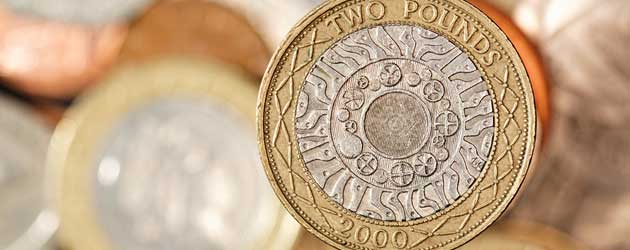
Sterling slid by around -0.6 cents against the US Dollar last night as traders reacted to a mildly positive US Industrial Production report for August. The Pound to US Dollar exchange rate fell from an 8-month high of 1.5963, to settle just above 1.5900 as Industrial Production Output rose by 0.4% and Manufacturing Production accelerated to 0.7%.
Industrial Production makes up for a sizeable amount of US GDP output and therefore is seen as an important indicator of US economic performance. Along with soft Retail Sales (0.2%), underwhelming GDP (2.2%), and disappointing Non-farm Payrolls (162,000), July’s stagnant Industrial Production print (0.0%) was seen to preempt anemic US growth in the third quarter. However, the encouraging improvement in August’s Industrial Production report could help to boost Q3 Gross Domestic Product, and this gave the US Dollar a leg-up against the Pound.
GBP/USD is currently around 3.0 cents better off than it was this time last week due to a combination of risk-on developments and positive British data releases.
The safe haven ‘Greenback’ has struggled against Sterling during the last 7 days as the situation in Syria has calmed slightly: a Western military strike is looking fairly unlikely at the moment and this has halted defensive inflows across the Atlantic.
Additionally, the US Dollar was rocked by news on Sunday evening that a hawkish policymaker at the Federal Reserve, Larry Summers, has withdrawn from the race to become the next Central Bank Chairman. The development means that Janet Yellen, who is seen to be far more dovish than Summers, is now odds-on favourite to replace Ben Bernanke at the head of the world’s most influential Central Bank early next year. This has been interpreted as hugely positive for financial markets across the globe as traders re-evaluate their Fed easing projections to allow for a longer period of loose monetary policy.
Quite apart from wider market trends, the Pound is riding high on its own merit: UK Unemployment unexpectedly fell by one percentage point last week, from 7.8% to 7.7%, and British Construction Output was reported to have advanced 2.2% during July, which suggests that the nascent economic revival is painting a positive picture in the minds of investors and businesses across all areas of the UK economy.
Later today UK CPI inflation data is expected to show a slight drop in price pressures during August, with the median market forecast suggesting a score of 2.7%. This is likely to halt GBP/USD rallies momentarily as inflation begins to slip towards the BoE’s 2.0% target. However, don’t write off the Pound just yet, a stronger-than-expected result is by no means out of the question, and would be seen as bullish for Sterling.
The main event this week takes place on Wednesday when the Federal Reserve is expected to announce a small tapering of asset purchases. Any taper of $15 billion or less has the potential to harm the US Dollar, whilst a larger reduction is likely to prove supportive to ‘Greenback’ strength.

Comments are closed.